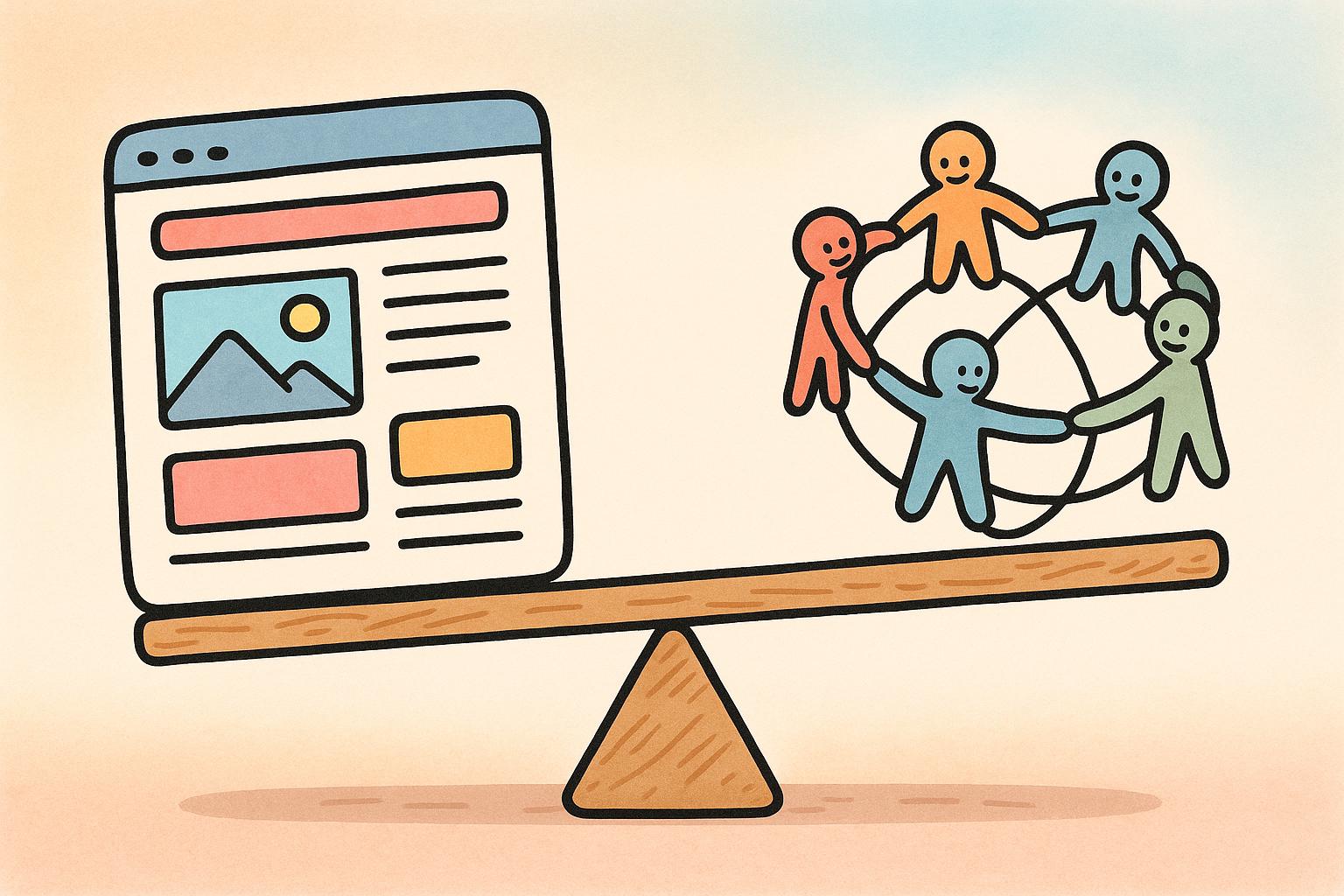Looking to keep your customers coming back? Small and Medium Enterprises (SMEs) can boost their profits and competitiveness by focusing on customer loyalty and retention strategies. Here's a quick guide:
- Understand Customer Loyalty and Retention: It's all about making customers choose you again and again.
- Why It's Important for SMEs: Keeping customers can significantly increase profits and is more cost-effective than acquiring new ones.
- Overcoming Limited Resources: Use tools and focus on quality service to make customers stick without breaking the bank.
- Measure Your Success: Keep an eye on key metrics like retention rate, repeat purchase rate, and customer lifetime value.
- Cost-Effective Strategies: From exceptional customer service to personalized perks, there are many ways to keep your customers loyal.
- Overcoming Common Barriers: Tackle challenges such as limited analytics capabilities and inadequate technology with smart, simple solutions.
Remember, the key is to start small, listen to your customers, and continuously improve your strategies to keep them coming back for more.
The Growing Importance for SMEs
Nowadays, with so much competition and customers always looking for something new, it's super important for SMEs to keep their customers happy and coming back. Here's why:
- If you can keep more of your customers, even a small increase can make your profits jump by a lot (between 25-95%).
- It's way more likely (60-70%) you'll sell something to someone who's already bought from you than to a new person (5-20%).
Since SMEs don't usually have big budgets for marketing, focusing on keeping existing customers can be a smart move.
Overcoming Limited Resources
SMEs might not have a lot of money or people to start big loyalty programs. But, there are simple things they can do:
- Use software tools: There are budget-friendly online tools that help with customer relationship management (CRM), sending out surveys, and more to keep customers happy.
- Focus on service quality: Making sure your service is top-notch can make customers want to stick with you.
- Offer exclusive perks: You can give loyal customers special deals or early access to new stuff to make them feel special.
- Gather feedback: Using surveys or paying attention to what people say online can help you figure out what your customers like and don't like.
Even without a big budget, SMEs can find creative ways to keep their customers happy and coming back. This is important for making more money and staying strong in the market.
Measuring Loyalty and Evaluating Retention Strategies
To make sure your customer loyalty and retention strategy is doing its job, small and medium-sized businesses (SMEs) need a clear way to see what's working and what's not. Keeping an eye on certain numbers helps you understand your progress.
Key Quantitative Metrics
There are a couple of important numbers to watch:
- Customer retention rate: This tells you the percentage of customers who keep coming back over a certain period. A higher number means more customers are sticking around.
Retention Rate = ((CE - CN) / CS) x 100
Where:
CE = Number of customers at end of period
CN = Number of new customers in period
CS = Number of customers at start of period
- Repeat purchase rate: This shows the percentage of customers who buy something again within a certain time. A higher rate means customers are returning to buy more.
- Customer lifetime value (CLV): This is all the money a customer spends with you over time. If this number goes up, it means you're doing something right.
Checking these numbers regularly helps SMEs understand how loyal their customers are and if their efforts to keep them are working.
Qualitative Feedback
Numbers don't tell you everything. It's also important to ask customers how they feel. Use surveys, social media, and reviews to get their thoughts on:
- How happy they are
- If they'd recommend you to others
- What they wish was better
- Why they might leave
This feedback helps you know what's working and what needs fixing.
Analytics and Adjustments
By looking at both the numbers and what customers are saying, SMEs get a full picture of how their loyalty and retention efforts are doing.
Check everything every few months to see if you're getting a good return on your efforts. Change what's not working. Keep improving to meet your customers' needs as they change.
Paying close attention and making changes ensures your strategy stays up-to-date with what your customers want.
Cost-Effective Customer Loyalty and Retention Strategies
Customer Service and Support
Good customer service is key to keeping people coming back. Even with a tight budget, small businesses can use smart tools to help customers efficiently. Here are some ideas:
- Use a chatbot that can understand and respond to common questions any time of the day. This way, you help people even when you're not there.
- Make a place online where customers can find answers to their questions easily, like how-to guides or tips for solving common problems.
- If a customer has a bigger issue, have a system where they can report it and get updates on how it's being fixed.
- Make sure your team knows how to listen well and talk clearly to customers. Happy interactions make customers want to stay.
Great service shows customers you care and turns them into fans of your brand.
Loyalty Programs
Creating a special club or program that rewards customers for sticking around is a smart move. Here's how to do it right:
- Levels: Having different levels, like beginner, intermediate, and top, works well. Make the top level feel really special.
- Perks: Give things like free shipping, discounts, or early looks at new products. Better rewards for higher levels.
- Tell people: Use emails to let customers know about the levels and perks. Show them the benefits they're getting.
- Keep track: Watch how often members buy stuff and how much they spend to make your program even better.
A good rewards program makes customers want to buy more and connect with your brand.
Personalization and Customization
Use what you know about your customers to give them a personal touch. Here are a few ways:
- Say hello to new customers with special guides and suggestions based on what they've bought before.
- Send emails about products they've looked at but haven't bought yet.
- Make special offers and pages just for your biggest fans.
- Suggest products that go well with what they've already bought.
Even simple personal touches can make customers feel special and keep them coming back.
Customer Education and Community
Help customers help themselves and get them involved with your brand by offering learning resources and places to talk. Good ideas include:
- Help centers: Easy-to-use sites with articles, videos, and guides.
- Forums: Online spaces where customers can talk about your products and get answers.
- Webinars: Free online seminars where you can show off your products and answer questions.
Also, show off how customers use and love your products on social media. Customers who learn from and connect with your brand are more likely to stay loyal.
Gathering Feedback and Reviews
Always be asking for feedback through:
- Surveys: Use surveys to get solid data on what customers like and need. Offer a little something as a thank you for their time.
- Interviews: Talking one-on-one can give you deeper insights. Maybe offer a gift card for their time.
- Review sites: Be active in responding to reviews online. Thank people who leave good reviews and address any problems.
- Social media: Keep an eye on what people are saying about you and respond kindly to any issues.
Asking for and acting on feedback shows customers you're listening and care about what they think.
sbb-itb-5c5ac24
Overcoming Common Barriers
This part of our guide talks about the usual challenges small businesses face when trying to keep customers coming back, and offers some straightforward advice on how to deal with them.
Limited Analytics Capability
It's tough for many small businesses to keep track of how well they're doing at keeping customers because they might not have fancy tools to help them see the big picture. But, there are simple ways to get around this:
- Use free tools like Google Analytics to see how customers behave on your site. Look for things like how often they come back, how many pages they look at, and if they buy anything.
- Ask your customers directly what they think by using surveys or pop-ups on your website. Focus on getting feedback that you can actually use to make changes.
- Think about getting some help from a marketing expert who can set up a basic way for you to track important stuff without needing a lot of fancy equipment.
- If you can, start using better tools bit by bit. Look for ones that are easy to use and don’t take long to start showing value.
Inadequate Technology Infrastructure
A lot of small businesses don’t have the big, fancy systems for managing customer relationships or automating marketing. But, you can still make a big impact without all that:
- Take a good look at what you already have and figure out what’s missing that’s making it hard to keep customers happy. Start by fixing those things.
- Begin with just one or two main tools, like a CRM system, that let you keep all your customer info in one place.
- Add more tools when you can, choosing ones that work well with what you already have.
- Remember, having the right technology is important, but you also need the right people and plans in place to really make a difference.
Determining Optimal Strategies
It’s hard for small businesses with limited resources to figure out the best ways to keep customers. Here’s how to find what works best:
- Look closely at your customer data to see why some people leave and others stay. Check if there are any patterns.
- Think of different ways you could make things better, from marketing to how you make your products. Pick a few ideas that are easy to try and won’t cost a lot.
- Test your ideas on a small scale first to see if they actually work. Keep track of what happens.
- Focus on the ideas that customers like and that make a real difference. Stop spending time and money on things that don’t work.
Trying different things and seeing what works is the best way to make sure your customers keep coming back, even when you don’t have a lot of money to spend.
Conclusion and Key Takeaways
Essential First Steps
For small businesses, getting started on keeping customers coming back means:
- Know your numbers: Find out your current rates for how often customers come back, buy again, and how much they spend over time. This helps you see where you're starting from.
- Listen to your customers: Use surveys, talk to them, check online reviews, and watch social media to hear what they think and want.
- Try small tests: Before spending a lot of money, try your ideas with a few customers to see if they work. Keep an eye on the results.
Getting these basics right means you're making decisions based on real info.
Commitment to Continuous Improvement
Keeping customers loyal is an ongoing job. Small businesses should:
- Keep checking your numbers: Always watch your rates and feedback to spot new trends or changes.
- Make tweaks: Use fresh insights to adjust your plans. Stick with what works and stop what doesn't.
- Build slowly: Start small and add more over time without overstretching your budget.
- Use smart tools: Look into software that can help you keep track of customers, send them personalized messages, and make their experience better.
Staying focused on making small, steady improvements is key for keeping customers.
Call to Action
Don't wait to keep your customers happy. Start by:
- Looking at past sales data
- Asking customers how satisfied they are
- Finding affordable tools to help manage customer relationships
With basic info on how you're doing, small businesses can find easy ways to make customers more loyal, which helps you grow and stand out from the competition.
Related Questions
What is customer loyalty and retention strategy?
Customer retention means keeping your customers coming back by making them happy and satisfied with what you offer. This can involve things like rewards for shopping with you again, special deals, and top-notch customer support.
Customer loyalty is all about making customers love your brand so much that they not only keep coming back but also tell their friends about you. It’s about creating a strong connection by making customers feel special and well-treated.
So, to sum it up:
- Retention is about keeping customers by making sure they’re happy.
- Loyalty is about turning happy customers into fans who help spread the word.
A good plan mixes both keeping customers happy and turning them into fans to keep them around for the long haul.
How to build customer loyalty five strategies for small businesses?
Here are 5 simple ways small businesses can make customers stick around and love their brand:
- Offer special treats for customers who keep coming back, like sales just for them or a free item after they buy a certain amount.
- Keep in touch with fun updates and special offers, not just ads, through emails or social media.
- Impress customers by solving their problems quickly and with a smile. This shows you really care.
- Ask customers what they think through surveys to fine-tune what you offer.
- Show off customers who are big fans on your website or social media. Seeing others happy with your brand encourages more loyalty.
How small business can boost customer retention?
To keep more customers, small businesses can:
- Make sure customer support is friendly and solves problems fast.
- Listen to what customers say to understand and meet their needs better.
- Use tools that send the right messages at the right time to keep customers interested.
- Create loyalty programs with rewards for regular customers.
- Make shopping easy with a smooth website and checkout process.
- Check in with customers after they buy to keep the relationship going.
- Provide helpful tips and forums where customers can learn and talk.
The main goal is to make customers happy every step of the way. Using tech to personalize their experience also helps.
Which KPI measures customer retention and loyalty?
The Net Promoter Score (NPS) is a key number that helps you see how well you’re doing at keeping customers loyal. It asks customers how likely they are to recommend your business to others on a scale from 0 to 10.
NPS = % Promoters - % Detractors
Promoters (score 9-10) love your brand and tell others about it. Passives (score 7-8) might switch to another brand. Detractors (0-6) aren’t happy and might leave negative reviews.
A high NPS means you have a lot of happy customers who could help bring in more business. Watching this number helps you see if you’re keeping customers happy and loyal over time.



